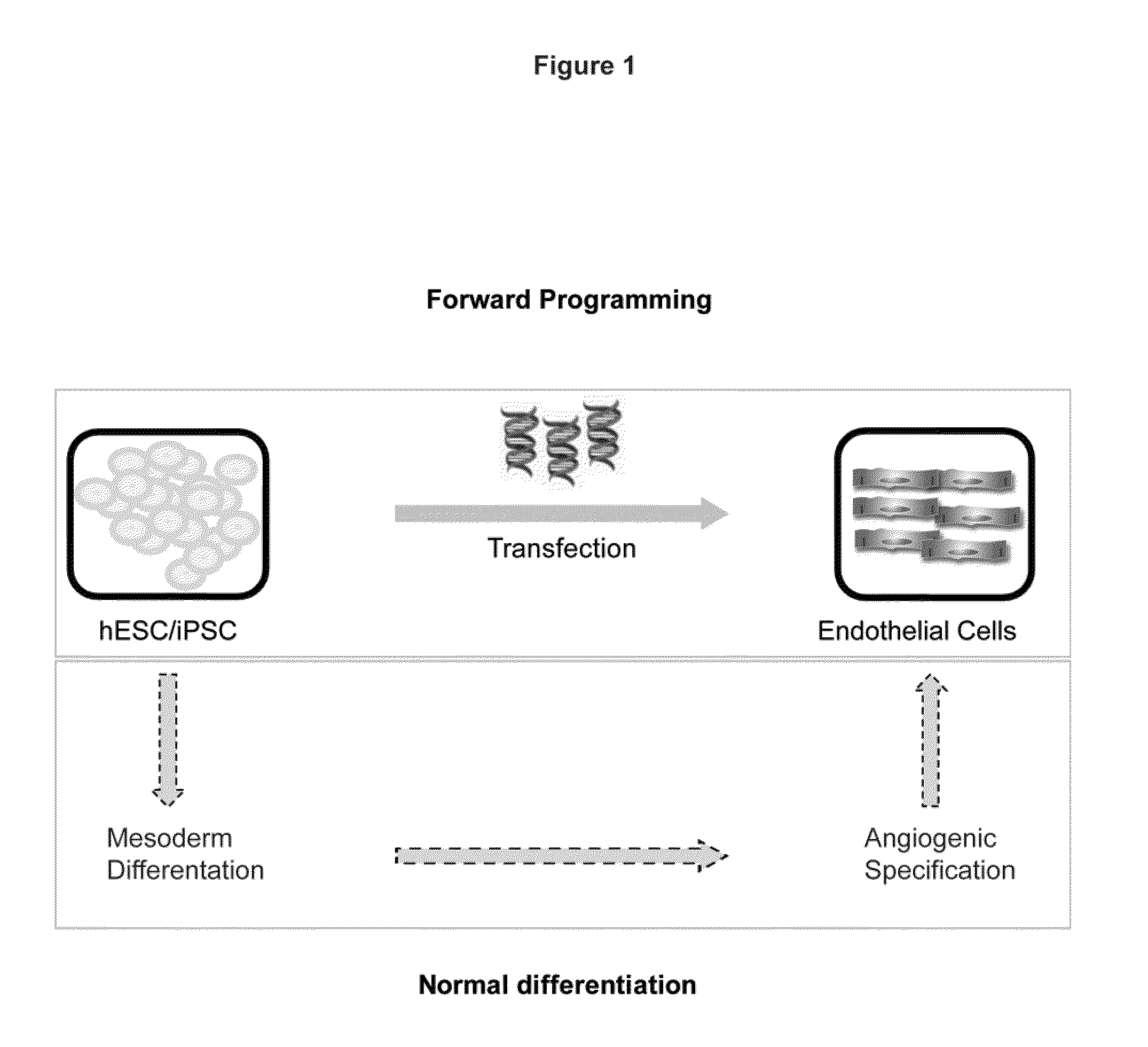Endothelial cell production by programming
a technology of endothelial cells and programming, applied in the field of molecular biology, stem cells, differentiated cells, can solve the problems of limited clinical usefulness of epcs obtained from patients, limited ability to standardize endothelial cell culture protocols and expand these cells in sufficient numbers for drug-screening purposes, and inefficient process of differentiation of endothelial cells from human escs or ipscs
- Summary
- Abstract
- Description
- Claims
- Application Information
AI Technical Summary
Benefits of technology
Problems solved by technology
Method used
Image
Examples
example 1
Forward Programming into Endothelial Cells
[0259]Alternative approaches for endothelial cell differentiation from human ESC / iPSCs are shown in FIG. 1. Endothelial cells can likely be efficiently induced from human ESC / iPSCs via expression of an appropriate transgene or transgene combination (top box), bypassing most, if not all, developmental stages required during normal differentiation (bottom box).
[0260]The strategy employed for identifying transgenes that could directly convert human ESC / iPSCs to mature endothelial cells (FIG. 2). Human ESC / iPSCs were engineered to constitutively express rtTET protein for inducible gene expression. Transgenes under the control of the inducible promoter Ptight were introduced into the engineered hESC / iPSCs by electroporation. Upon doxycycline (Dox) addition, transgene expression is induced, and EC differentiation is monitored by the characteristic EC morphology along with expression of definitive EC markers (e.g., CD31, CD144 (VE-cadherin)) by flo...
example 2
Transdifferentiation into Endothelial Cells or Endothelial Precursor Cells
[0276]Similar to forward programming, endothelial cells or endothelial precursors may also be obtained via transdifferentiation from human somatic cells such as skin fibroblasts, adipose tissue-derived cells, keratinocytes, and blood cells. To identify genes that can convert somatic cells to endothelial cells or endothelial precursor cells, a lentiviral transgene delivery system will be used for the inducible expression of candidate genes (called the TET-ON system). Briefly, the cytomegalovirus (CMV) promoter will be used to drive the expression of the rtTET protein, and the candidate genes will be placed under the control of the rtTET-responsive inducible promoter (called Ptight). Both the rtTET and transgene-expressing lentivirus will be used to cotransduce cells. Doxycycline (0.2-1 μg / mL) will be added to the transduced cells to induce transgene expression, and the cell culture medium will be replaced with ...
PUM
| Property | Measurement | Unit |
|---|---|---|
| average cell cycle time | aaaaa | aaaaa |
| average cell cycle time | aaaaa | aaaaa |
| average cell cycle time | aaaaa | aaaaa |
Abstract
Description
Claims
Application Information
 Login to view more
Login to view more - R&D Engineer
- R&D Manager
- IP Professional
- Industry Leading Data Capabilities
- Powerful AI technology
- Patent DNA Extraction
Browse by: Latest US Patents, China's latest patents, Technical Efficacy Thesaurus, Application Domain, Technology Topic.
© 2024 PatSnap. All rights reserved.Legal|Privacy policy|Modern Slavery Act Transparency Statement|Sitemap



